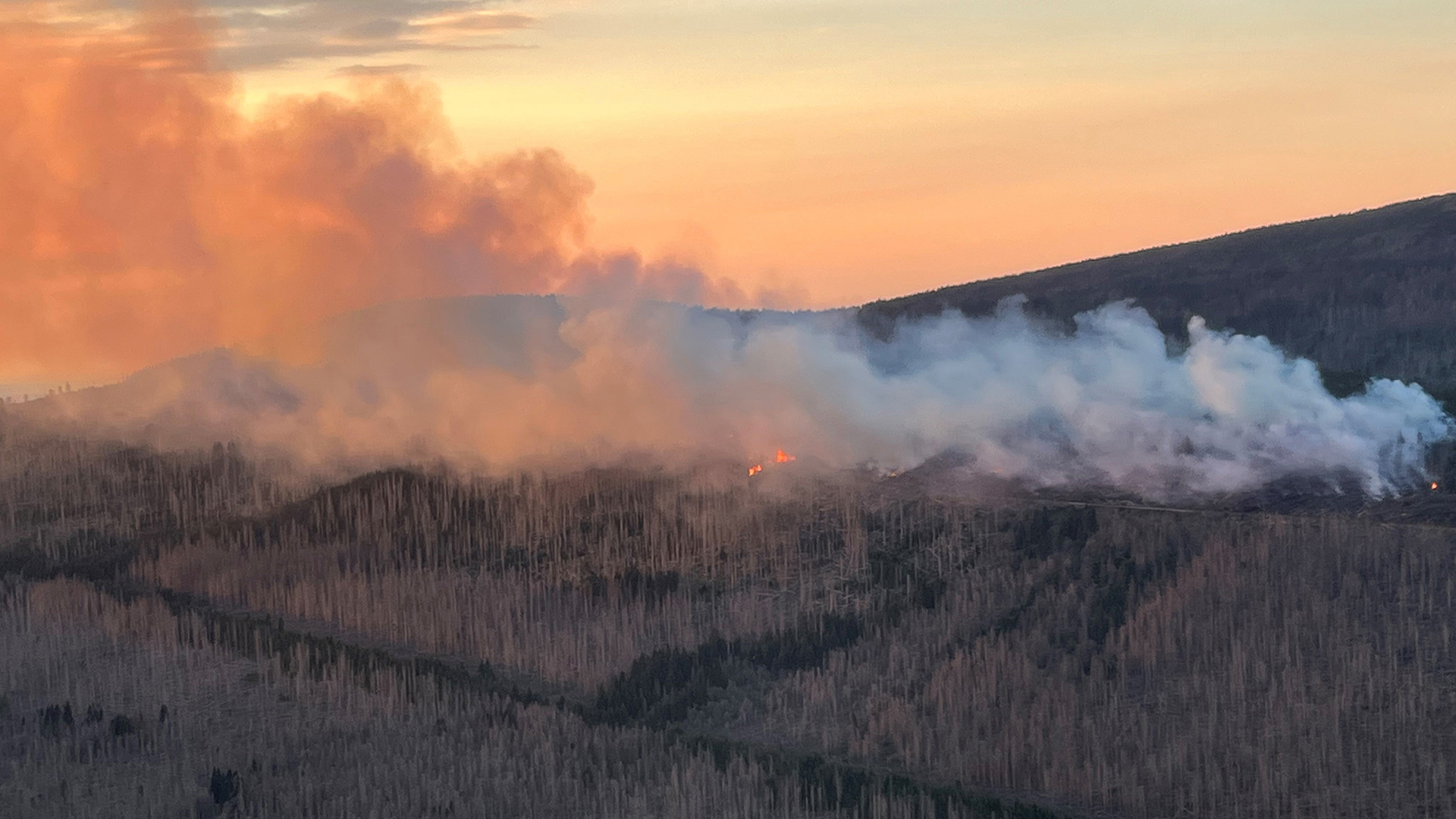As of: 03/21/2023 4:57 PM
Climate change is also leaving its mark in Germany: aridity, heat and long dry periods. How should forests be designed in the future to reduce the risk of large wildfires?
Climate change is showing itself in Germany’s forests. Winter droughts and long dry periods generally create stressful and difficult situations for the forester. In Germany, the past year 2022 was marked by many forest fires. It was a year as brutal as 2019, with about 2,700 hectares of forest burned. This is equivalent to 27 square kilometers or about 3,781 football fields.
Experts have drawn up and drawn up an action plan for the forest and fire services, eg within the research project Climate resistance in forest fires (WKR). Various technologies are also intended to support forest fire prevention.
Wildfires can cause permanent damage to forests
If a fire spreads through the forest in this country, the stability and vitality of the ecosystem will be affected. In a ground fire, roots and seeds are damaged or destroyed. Ground fire can also speed up mineralization processes and cause leaching of important nutrients. In the event of a fire, additional greenhouse gases such as carbon dioxide will also be released, so that the forest will no longer help reduce the level of carbon dioxide in the air, but will itself become a source of carbon dioxide emissions Federal Environment Agency.
Dry winters also increase the risk
In recent years, the risk of forest fires in Germany has increased dramatically. It’s not just summer droughts that cause wildfires; Lack of precipitation in winter also leads to insufficient water supply for the soil. Trees lack soil water near the surface. Less snowfall and therefore less snowmelt thus increases the risk of forest fires, according to Johann Goldamer of the University of Freiburg in an interview with SWR.
Brandenburg is increasingly affected by forest fires, but this also happened in the state of Baden-Württemberg last year, especially in the Karlsruhe region. The Freiburg Forest Research and Testing Institute (FVA) and the European Forestry Institute (EFI) work together to take the best possible measures in such dangerous situations. The goal is for the forest and fire services to work better together and improve bushfire management and bushfire prevention.
Not all forests are the same
How wildfires develop depends greatly on various factors. It depends on the structure of the forest, what kind of tree species are in the area, how old they are and also how deep the branches are on the trunk. Weather and topography also play an important role.
Although pine monocultures have a much higher burning potential than semi-natural mixed forests, which are supposedly more resistant, drought does not spare them either. Alexander Held, project manager, explains that forest fires will accompany us in the future and will not remain uncommon. Instead, we must learn to live with it and prepare for it as best we can.
The new concept achieves very good results
Compared to other federal states, the concept developed in Baden-Württemberg for better cooperation between the fire brigade and the forestry achieves an exceptionally good result that cannot be taken for granted. In the developed and established tandem system, communication with the concerned partner must be improved at various levels.
For example, at the county level, the forester and his team of foresters will coordinate with the local fire chief and volunteer fire departments. Only when both sides know how the partner works and how they can support each other creates a good foundation for fighting fires.
In this collaboration, a common agreement is reached about where the things that need to be protected are located, such as power lines, and what equipment and organization is required. Since the fire brigade is not yet adequately equipped for wildfires, it is necessary to discuss what exactly is needed. This collaboration must also take place in a tandem system at the county level up to the forest chief and state fire chief.
Spot smoke and fire quickly
In forest fire prevention, it is important to identify potential changes such as fire sources and smoke development as early as possible. Early detection and monitoring systems should help keep damage from wildfires as low as possible. Satellite and drone imagery, but also ground-based sensors can be used for this: sensors attached to trees, for example, can detect smoke and send a warning signal via SMS, explains Lukas Stange from Forst Baden-Württemberg (ForstBW).
Preventing wildfires affects everyone
Forest fires are not among the natural events that occur naturally in Germany’s forests. high WWF 96 percent of forest fires are caused by human negligence or arson. Natural causes such as lightning strikes are less likely to cause wildfires.
Forest fire prevention, so that Federal Environment AgencyIt can only be achieved through the dedicated work of foresters and firefighters. Their activities can affect fire conditions through actions such as removing branches close to the ground and removing fuel. But preventing wildfires also means everyone behaves well.

“Total coffee aficionado. Travel buff. Music ninja. Bacon nerd. Beeraholic.”








More Stories
Coral Seeding: Artificial Insemination Makes Coral More Heat Tolerant
Fear, Anger, and Denial: How People Respond to Climate Change – Research
LKH Graz: Using radiation to combat heart arrhythmias